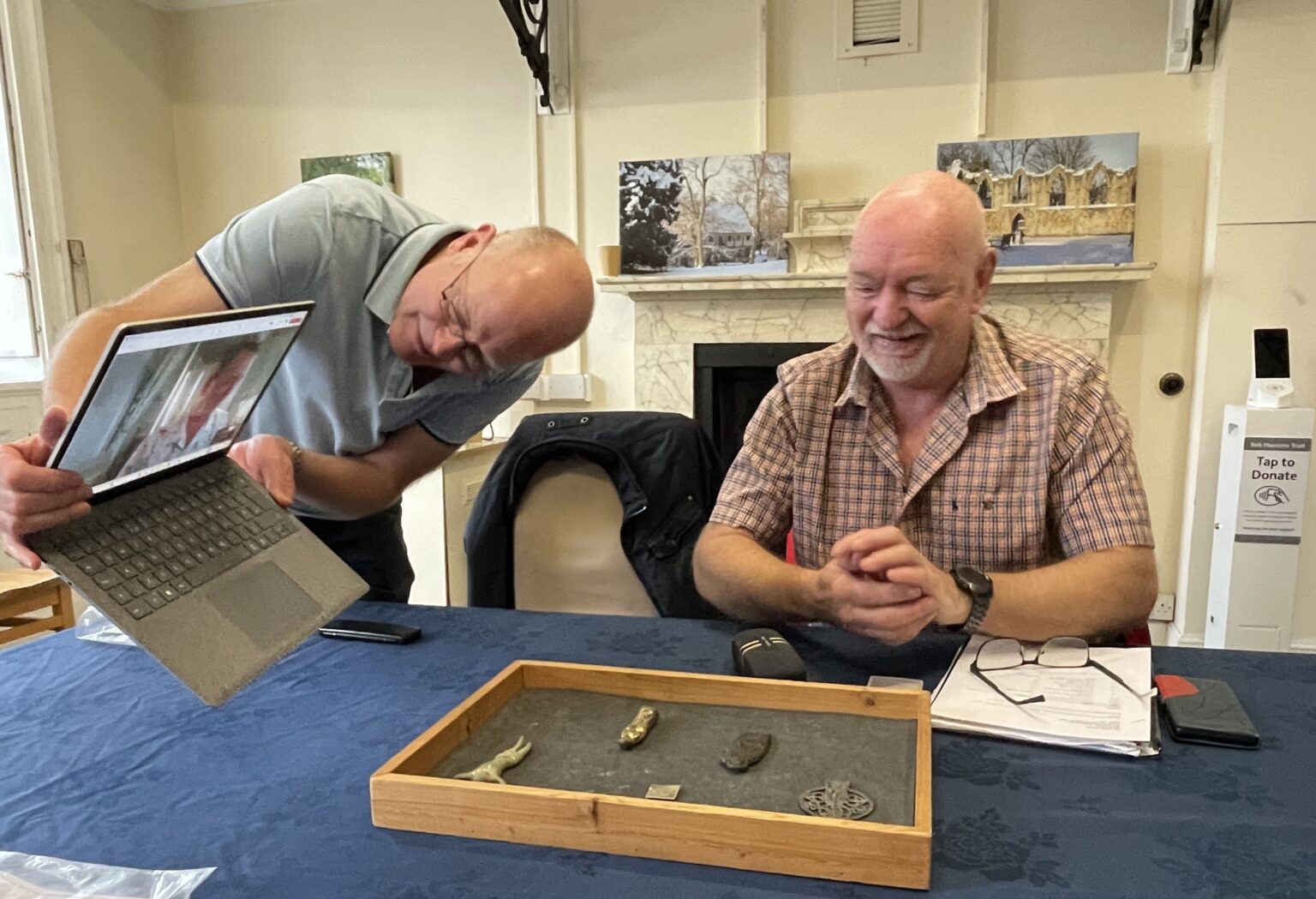By Rebecca Griffiths
Above: Two members of the team show a third, attending remotely, some of the objects considered for inclusion in the MeRit display.
The Medieval Ritual Landscape project (MeRit) is a collaboration between the University of Reading and the British Museum’s Portable Antiquities Scheme, funded by the Arts and Humanities Research Council (AHRC). The project explores the archaeological evidence for everyday religion in medieval England (c. 1000-1600) by looking at the material culture used in household devotion, healing, protective charms, and grave goods. MeRit will work across three case study regions, Kent, Norfolk and North Yorkshire, to give insight into local patterns of religious belief and provide important contextual and chronological understanding of lived religion.
In Yorkshire, Michael Lewis (British Museum) and Rebecca Griffiths (Yorkshire Museum) are working with representatives of the local metal detecting community to co-curate a display in the Museum foyer.
On 17th January 2025 we held our second workshop at the Yorkshire Museum. You can read about our first workshop here: MeRit Citizen Science Workshop at the Yorkshire Museum – Yorkshire
At this workshop, we began refining ideas for our display. We decided to include some stunning objects from the museum collections, but most of the objects will be local, metal detected finds. We will use these to explore how medieval people ‘lived’ (i.e. expressed) their religious beliefs through their material culture.
It was difficult to choose which objects to include but we have a range of types which not only show how important religion was to the medieval people but also how they used these objects to interact with the landscape around them.
We also discussed a later stage of the project in which students from the University of York St John will bring these finds alive through animation. We thought about what we want these films to do and how we can share them with the public once the project is complete.
Our next steps are to look at the overall design of the display and begin to put together the text which will help us tell these important stories about everyday religion in medieval England.

